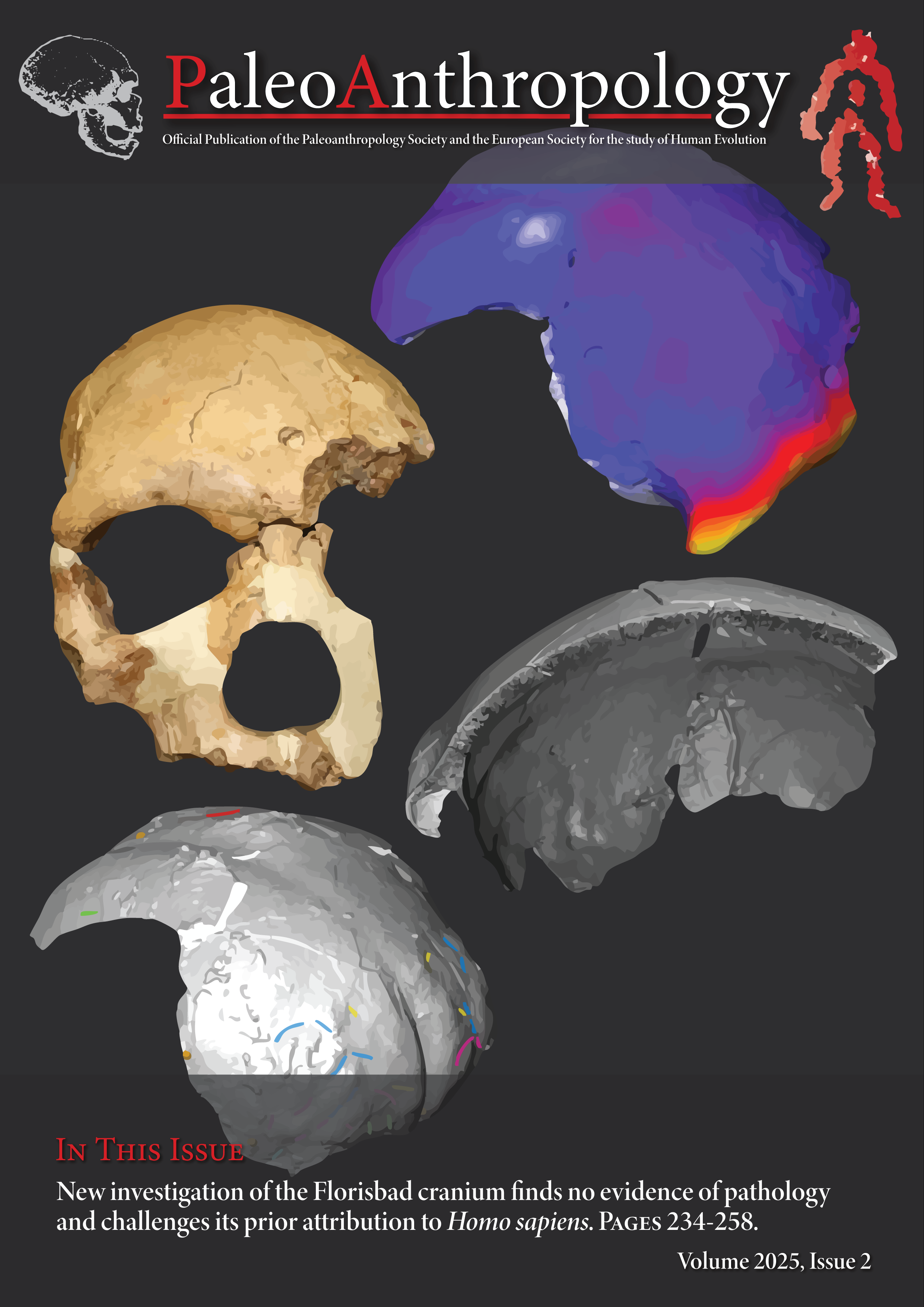Xujiayao Homo: A New Form of Large Brained Hominin in Eastern Asia Special Issue: What’s in a Name? Late Middle and Early Late Pleistocene Hominin Systematics
Main Article Content
Abstract
Xujiayao, located in northern China, is an important paleoanthropological site because it dates to the late Middle Pleistocene (~200 ka - ~160 ka) and has a combination of hominin fossils, archaeology, and other vertebrate faunal traces. Unfortunately, since the Xujiayao hominin fossils were found in the mid-1970s, their taxonomic assignment has yet to be settled. Evaluations of the Xujiayao taxonomic position have ranged from being representative of Asian Homo erectus, Neanderthals, intermediate between H. erectus and modern H. sapiens, to being the skeletal biological side of the Denisovans, to being related to Xuchang 1, Penghu 1, and/or Xiahe 1, or possibly even representing a previously un-identified hominin species. In fact, the Xujiayao hominin fossils are quite unusual in their morphology, primarily because of their: 1) very large cranial capacity with a low and wide cranial shape; 2) unusual Neanderthal-like bi-level nasal floor, temporal labyrinthine proportion and thin occipital torus; 3) relatively large and complex teeth; 4) a slow pattern of dental growth and development state that is more in line with modern humans than earlier hominins; and 5) a mosaic of archaic and modern features of the mandible and temporal bone. The Xujiayao hominin fossils have several basal East Asian traits despite their young geological age, a few Neanderthal morphologies that are common but not exclusive to that lineage, and traits that are not seen in either archaic or recent humans including other Middle Pleistocene hominins from the region, except Xuchang, Penghu 1, Xiahe 1, and the Denisovans. Collectively, these fossils, minimally represent a new form of large brained hominin (Juluren) and possibly a new taxon altogether (H. juluensis sp. nov.); a late archaic hominin that was widespread throughout much of eastern Asia during the late Quaternary.

